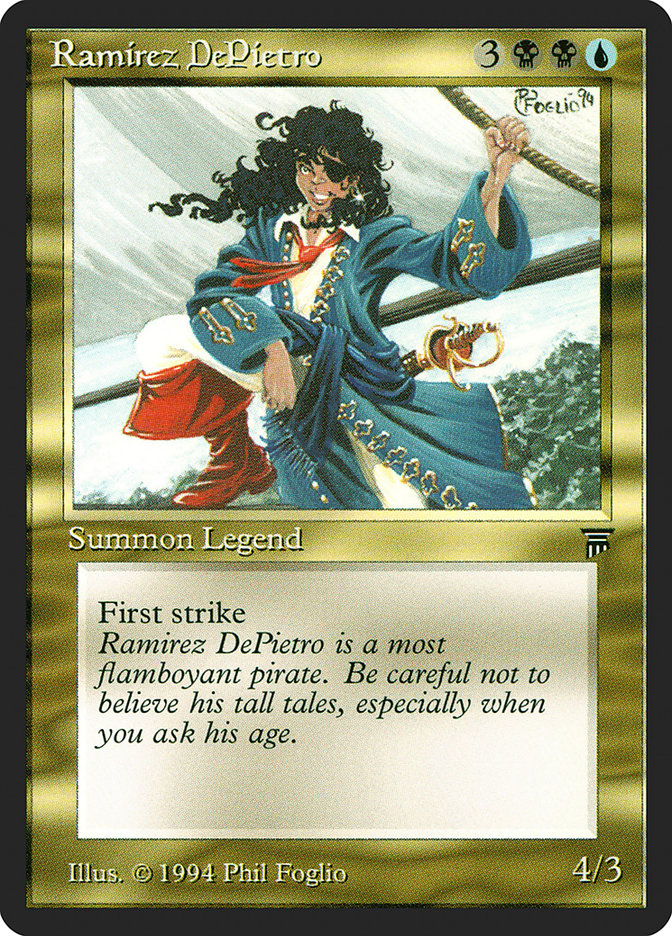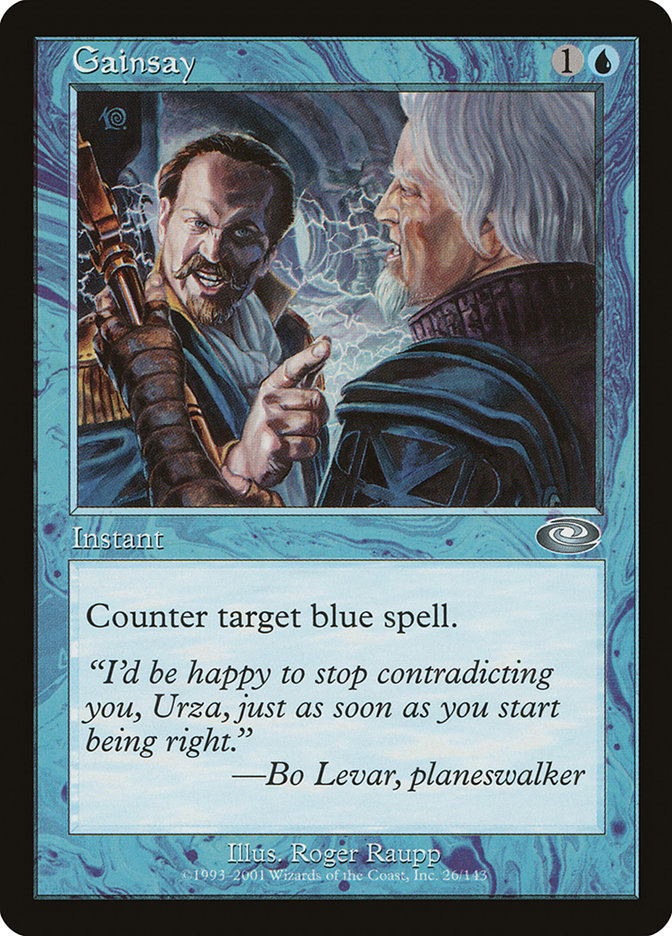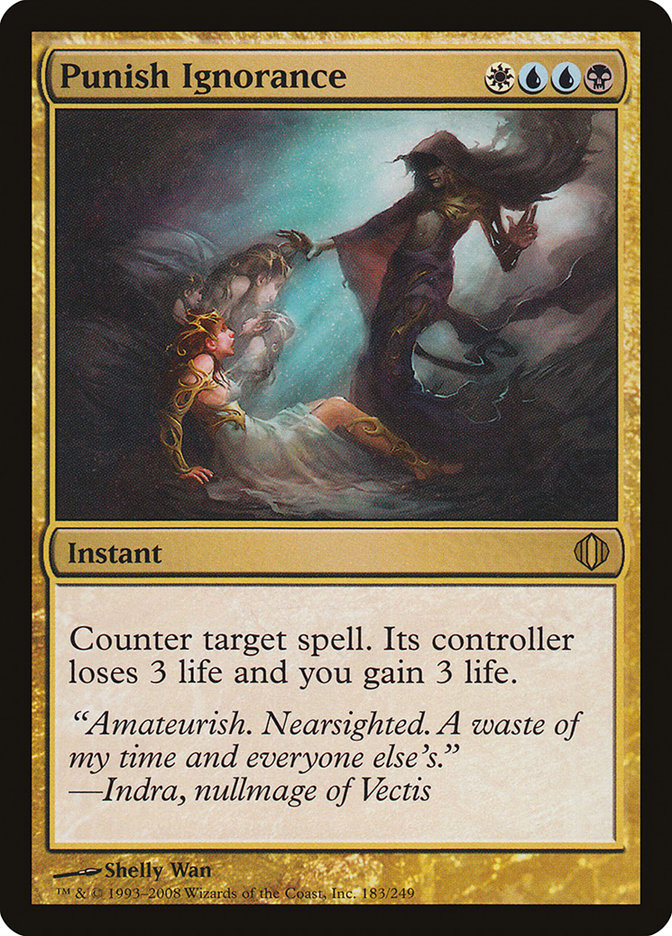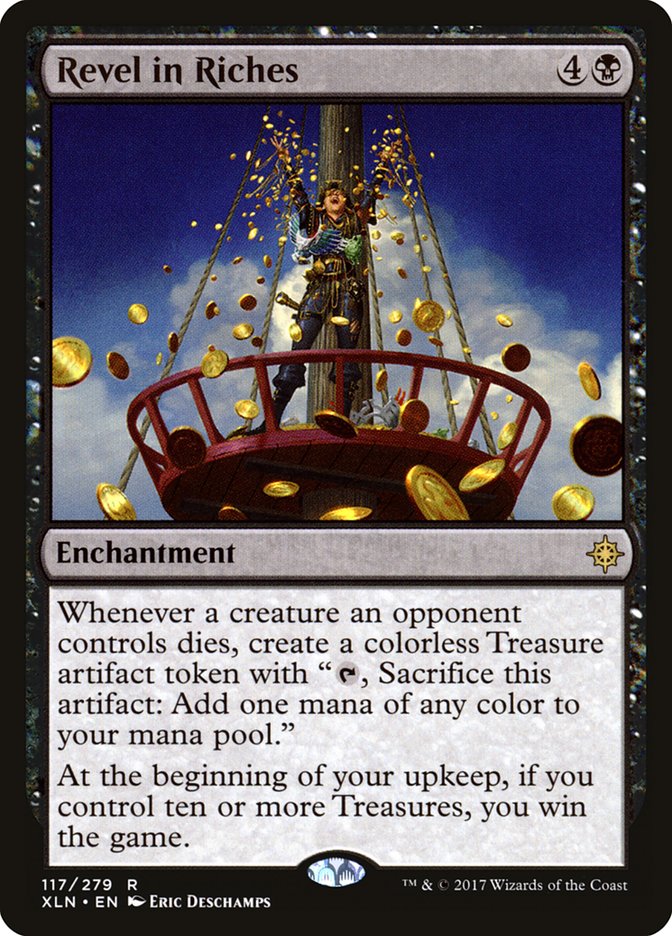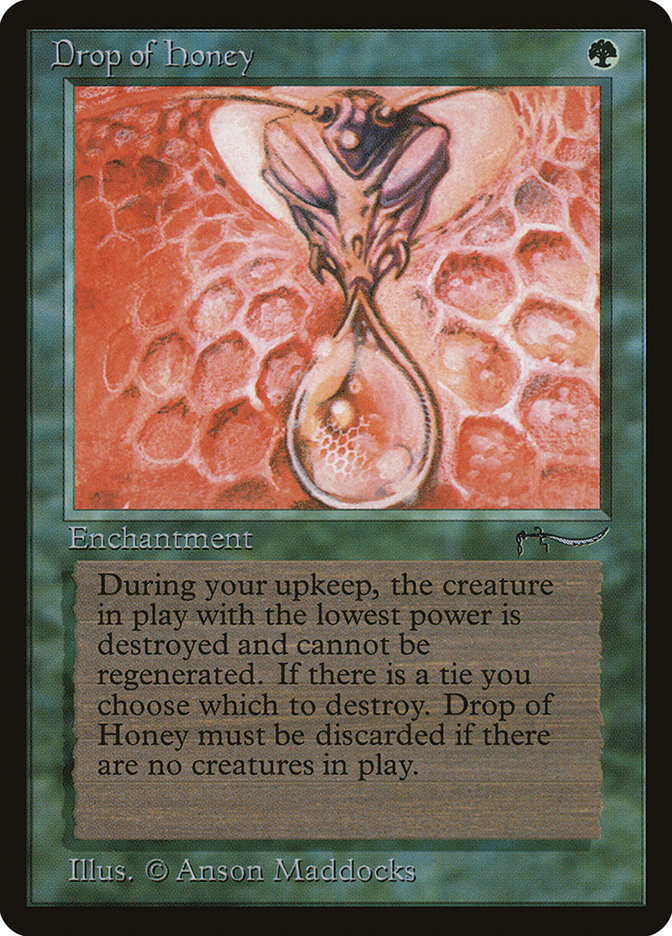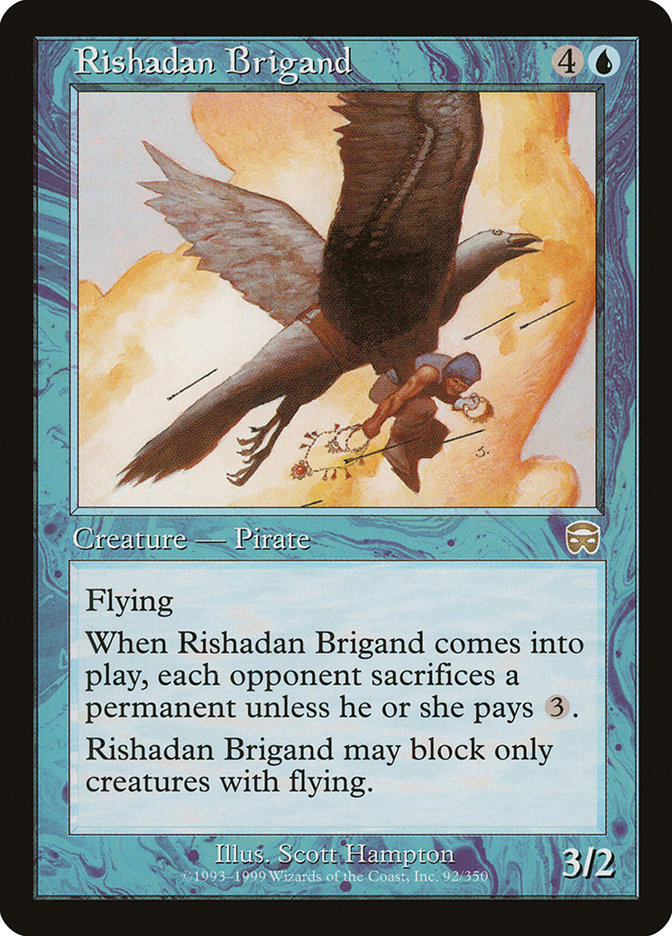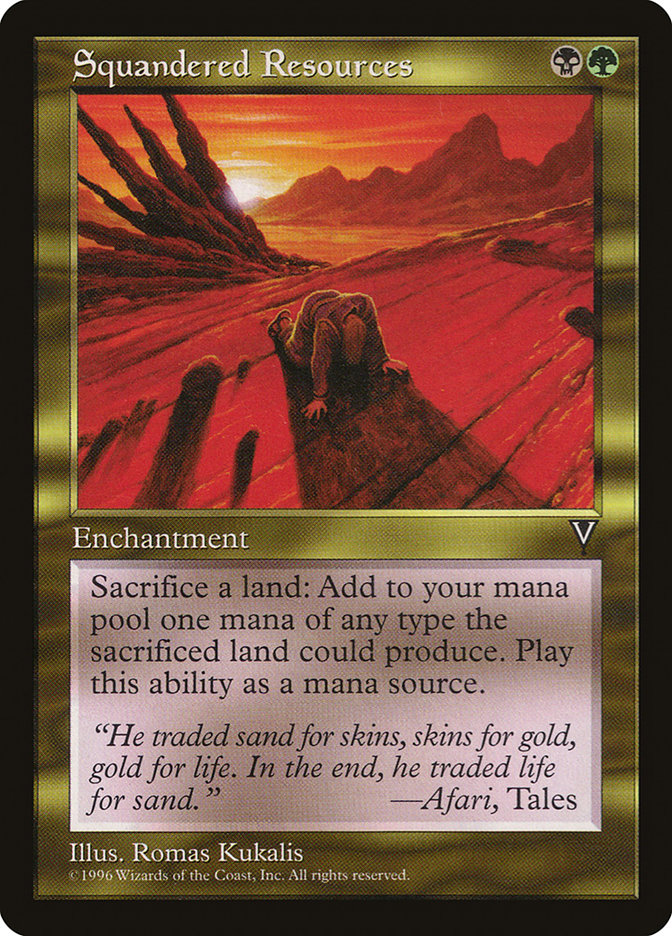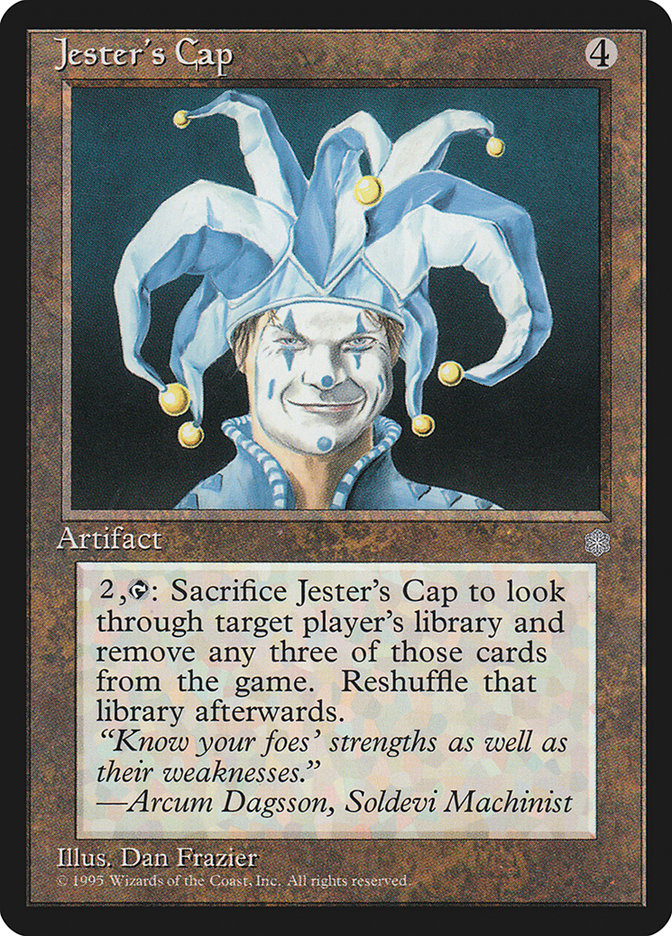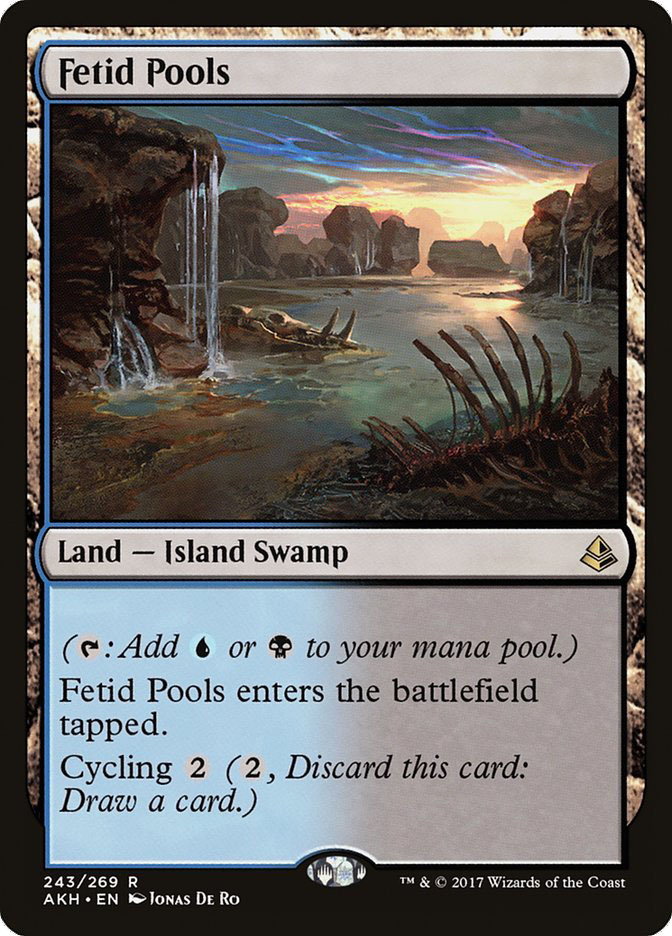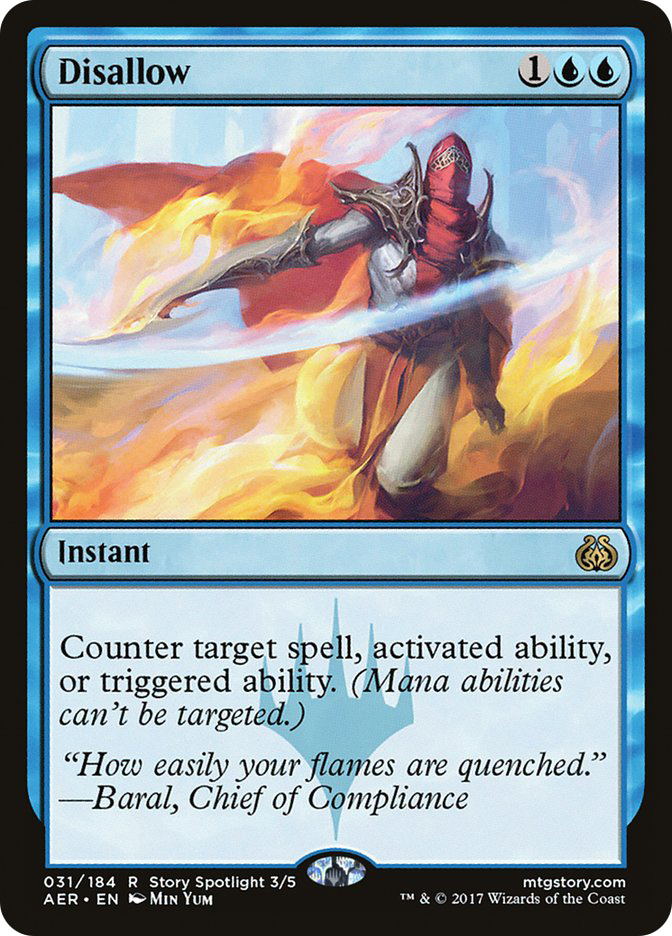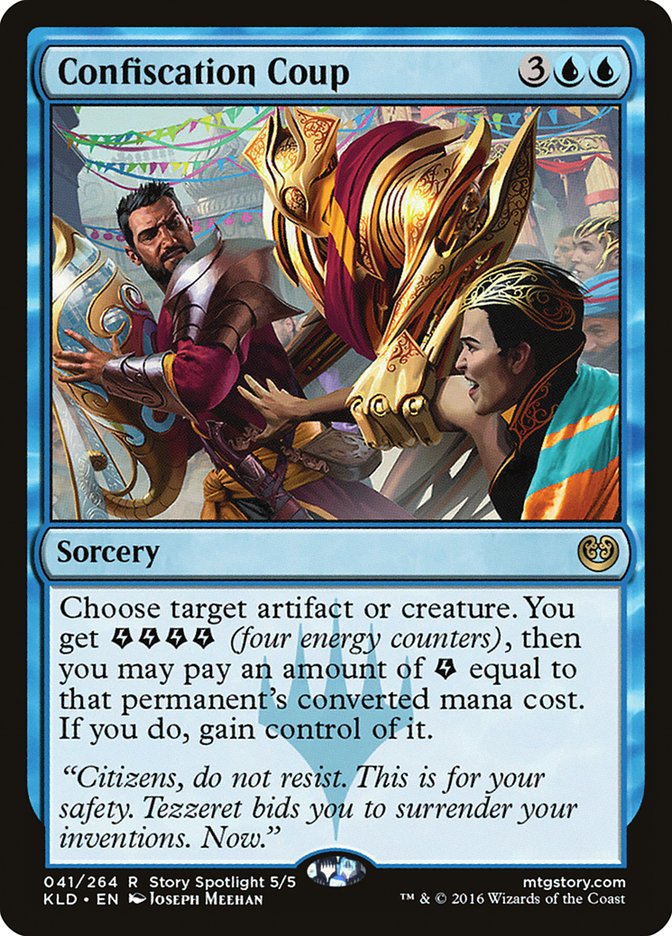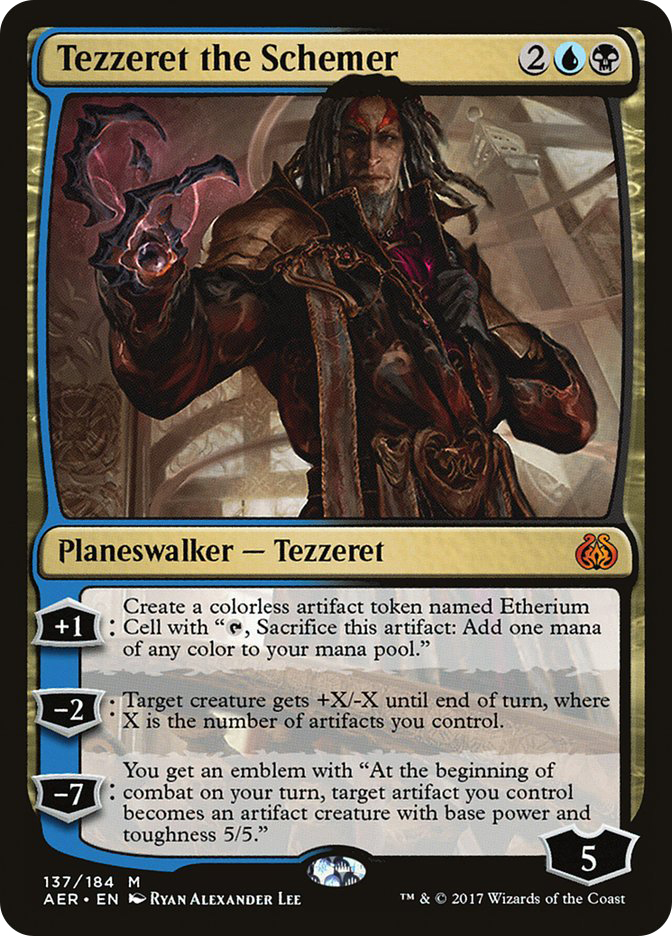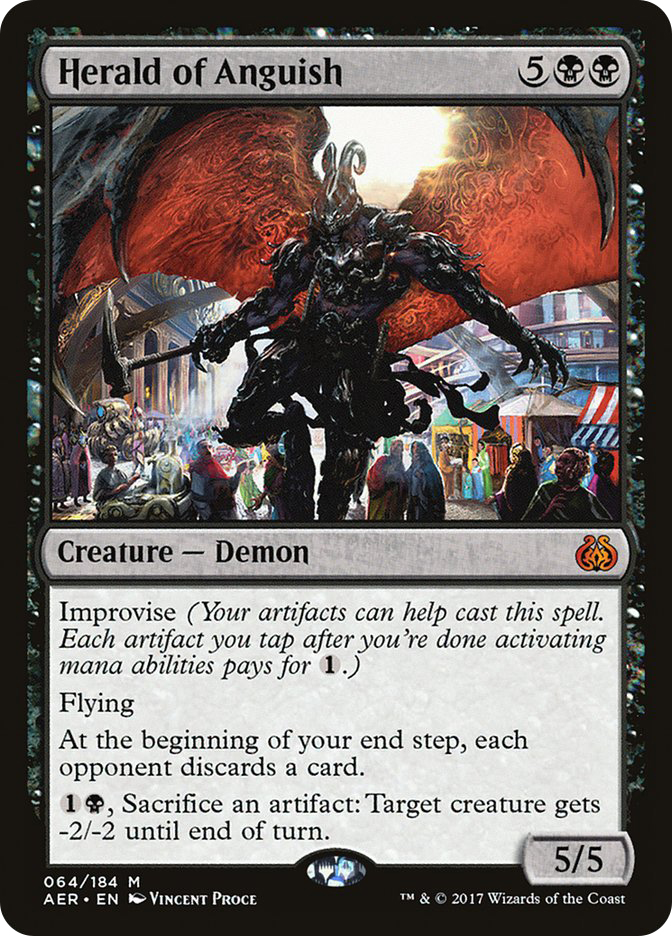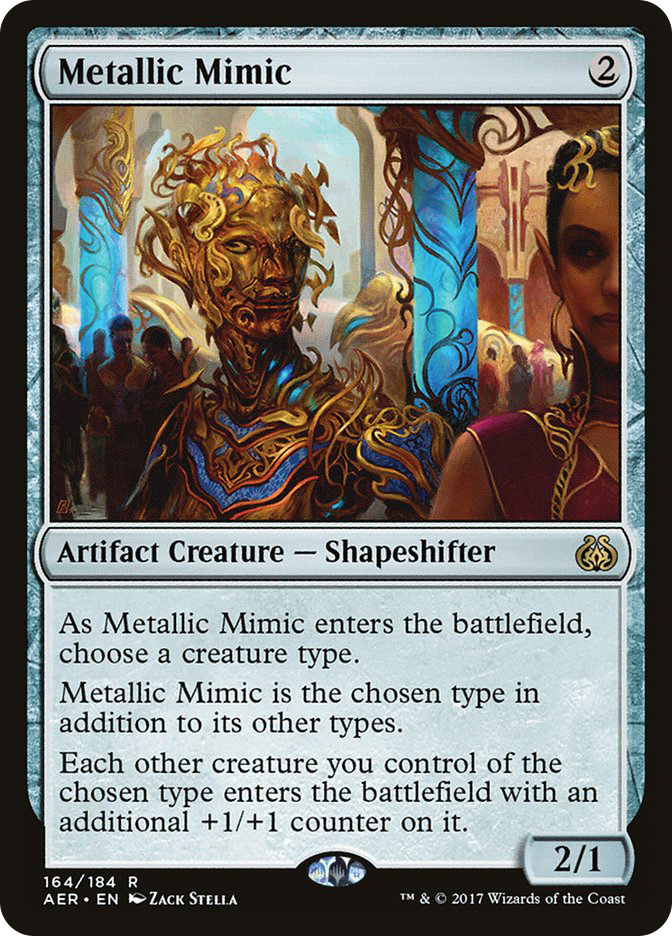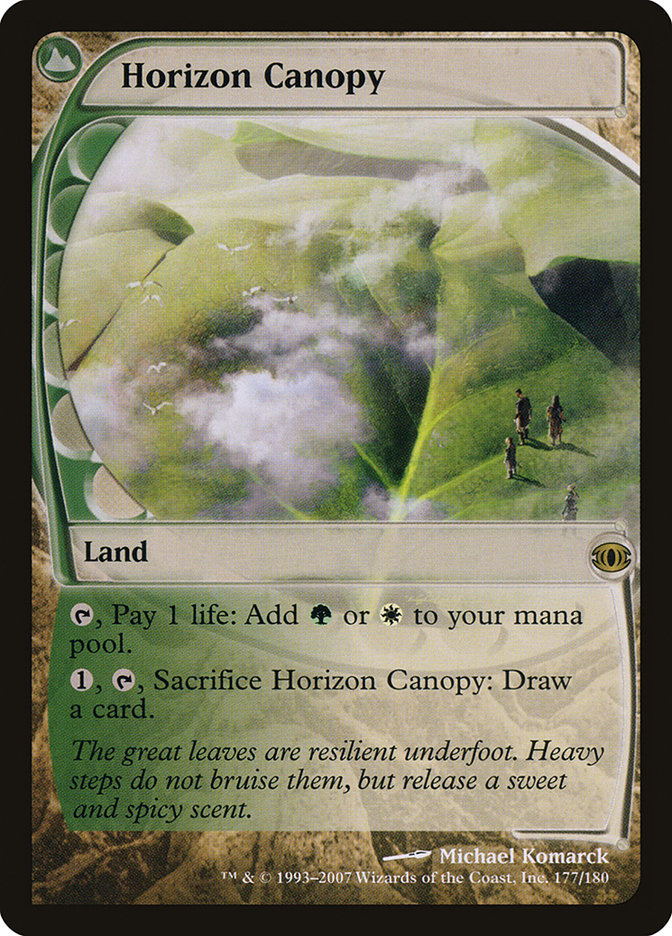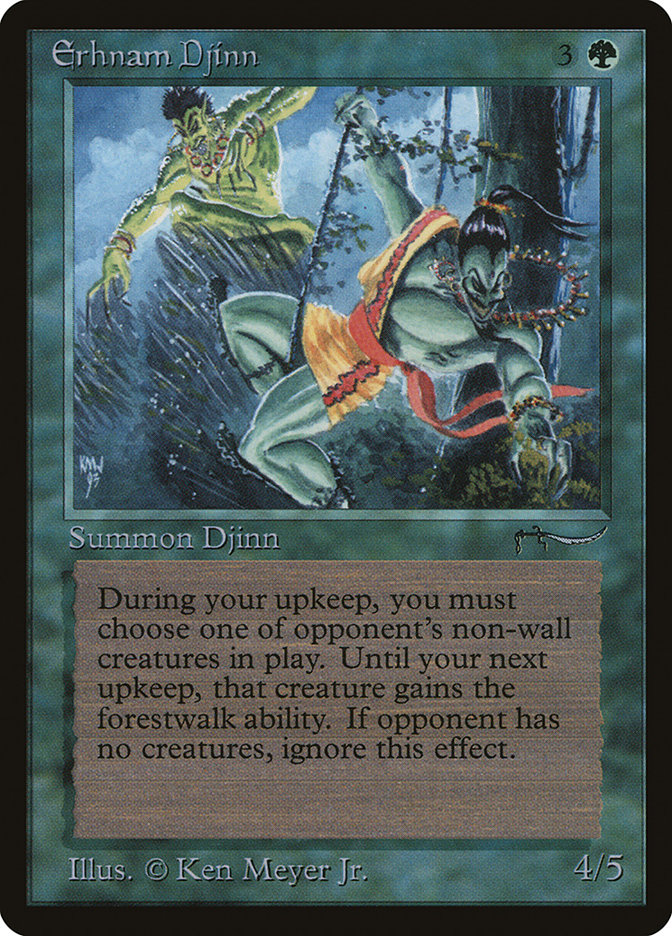
We all got fooled.
Last week, the internet was abuzz with rumors of a Pirate Stompy deck that was supposedly taking the Legacy metagame by storm. The gossip was that Bob Huang, the deck’s pilot, was deliberately losing one of his five matches in each event in order to keep the list from becoming public. Bounties were offered. Research was done. Lists came from…somewhere. Rishadan Brigand, a five-mana bulk rare from Mercadian Masques, jumped to $20.
Huang teased that the full list would be published on Monday, and a good chunk of the Legacy community wanted to get in ahead of the hype. It wasn’t just speculators buying those Pirates; it was long-time Legacy players excited to try something new.
The list was published. I refreshed the page, scrolled down…and saw Ramirez DePietro starting back at me.
Yikes.
Yeah, that card wouldn’t even be playable in Ixalan Sealed, much less Legacy. Either the entire thing was an elaborate joke (the truth) or else Bob is still hiding the real deck somewhere and published a bogus list in order to throw everybody off the scent (cue The X-Files theme).
The joke seems obvious in retrospect, but don’t they all? In truth, almost nobody was calling Pirate Stompy a fraud last week. Oh, sure, we weren’t sure if the list was correct, or if the deck would actually be any good, but we all believed it was real.
I’m not going to get into the morality of a joke that ended up causing players (not just the evil, evil speculators!) to drop more than $100 on worthless Pirates. At the very least, I don’t think that Bob or anybody else set out to hurt anyone—it was likely a cross between a harmless prank and a rumor that exploded past the point of reasonability. But I do want to spend a few thousand words talking about some of Magic Finance’s biggest traps. Whether you’re weeping into a stack of Rishadan Brigands or not, we all make mistakes.
Don’t Step Too Far Outside Your Comfort Zone
The world of Magic is vast. There are three major Eternal formats, there’s Standard, and there are a half-dozen popular casual variants. Even if you play Magic every weekend, you probably don’t have an encyclopedic knowledge of every format. Can you name the five best decks in Pauper, the Old School brew that’s currently losing favor, the biggest changes in Vintage since the latest restrictions, the most popular Commander in Commander 2017, and the differences between Temur Energy and Sultai Energy in Standard? I bet you can do one or two of these things pretty easily, and you might be able to guess one or two more, but you won’t get them all. Only a handful of people can.
I write about this stuff for a living, and I still have to do loads of research each and every week. Despite that, there are still times when I won’t be able to figure out why a card jumped in price and I have to rely on the knowledge of some commenter who has their pulse on one very specific and obscure section of the market. That’s just the way things are. Like I said, the world of Magic is vast.
Admitting that you don’t know something is difficult, though. It’s especially difficult for Magic players, because we’re the sort of people who pride ourselves on our ability to know stuff. There’s a reason why blue is the most popular color, and it’s not just that blue is really good. We play this game, at least in part, because it rewards people for knowing a thousand different micro-interactions. Whenever I see a card rise or fall, my initial reaction is to assume that I already have enough knowledge to figure out why.
This can get problematic when it comes to Magic finance. I see too many people who are legitimate experts in Standard Magic assume that they understand Commander, even though they’ve never actually sat down to play a single game. “It’s all about foils and big stuff, right?” Well, sort of. But it’s also not about that at all.
Some of the people who bought into Legacy Pirate Stompy did so because they fell into this trap. I don’t know a lot of active Legacy players who believed that this deck was going to end up as anything more than a curiosity. At the very least, they assumed that the full list would have to be a lot different than the rumored brews if it was actually going to end up as a permanent part of the metagame. Some of them bought in anyway, but the more knowledge of the format you had, the less likely you were to have gotten completely fooled.
This rule takes on even more importance when dealing with a brand new format. You shouldn’t dismiss them all—Old School ended up causing lots of cards to legitimately spike in price—but for every Old School, there’s a format that’s all sizzle and no steak. Tiny Leaders, anyone? Or Frontier? So many people bought into these formats despite not really understanding what they were even supposed to be about. At the very least, try to understand 1) who each format is for, and 2) what makes it interesting and unique.
There’s an easy solution here, of course: stay away from speculating on formats you don’t understand. There are loads of Magic finance opportunities every week, and you don’t have to participate in all of them unless you’re a full-time dealer. There’s no shame in sticking to what you know.
Otherwise, it’s important to swallow your pride and admit that you have blind spots. We all do. If you’ve never played it, talk to people who play a lot of Commander. Borrow a tuned deck and sit down for a couple of matches. Don’t just play Magic the way you normally play it—try to figure out the pace and spirit of the game. The same goes for Old School, or Vintage, or anything else that you’re not familiar with. There are no shortcuts here, and there’s no room for people who aren’t willing to set their egos aside and learn.
Watch Out for False Patterns
Humans love patterns. It’s how we learn. If we didn’t make assumptions about new things based on pattern recognition, the world would be a terrifying place. Imagine how terrified you’d be of big dogs if you weren’t able to pattern each dog encounter together in order to create a “dogs = friendly” hypothesis.
Here’s a pattern:
Here’s another:
And another:
And one more:
I can do this all day. For the most part, Magic players tend to overrate cards that seem too similar to cards that used to be good and underrate cards that seem too similar to cards that used to be bad. Time Reversal and Day’s Undoing were both $20+ preorders because they looked sorta like a pair of high-end Eternal staples. Both Blood Scrivener and Pain Seer were massively overrated thanks to Dark Confidant (and I feel like Ruin Raider is currently being underrated thanks to Pain Seer and Blood Scrivener being washouts). Aurelia’s Fury was a $30+ card at release in large part because Standard was being defined by similar-looking X spells at the time. In the two years after Jace, the Mind Sculptor was printed, almost every planeswalker pre-ordered for $50. We do this over, and over, and over again.
This behavior is partially driven by a desire not to miss the next big thing. You’ve probably got a friend right now who’s bragging about having bought their set of Hostage Takers for $1 each, right? And someone else who got their The Scarab Gods for $10, and someone else who picked up Walking Ballista for $2.50, and on, and on, and on. So you vow that you’re going to be that person next time, and when preview season starts, you scour the card gallery for patterns.
I’m not saying that preordering is always a bad thing—after all, some people did get their set of Hostage Takers for $1 each—but it’s important to apply your critical thinking skills to each purchase. It seems simple, especially when you remember how successful your friends seem to be, but I think it’s similar to the phenomenon where it feels like everybody you know on social media is constantly eating fancy meals and taking elaborate vacations. Nobody posts photos of their leftover tuna casserole, and nobody likes to talk about their spec failures.
Again, I think people applied some pretty faulty pattern logic when they bought into Pirate Stompy. Rishadan Brigand seems like a bad card in a vacuum, but it’s easy to see a pattern of weird old rares suddenly surging in value. Heck, the last big change in the Legacy metagame caused Drop of Honey to become a $600+ rare, and I don’t blame anyone for not wanting to miss the next Drop of Honey. The problem here was that five-drop creatures that haven’t seen a single day of play in more than a decade are probably not hidden gems, no matter what the pattern said.
Don’t Be the Greater Fool
Magic cards don’t have much intrinsic value. They’re cheap to print and they’re not exactly an essential component of a productive society. If Wizards of the Coast wanted to, they could print a million copies of every expensive card and give them away until they were worthless.
This means that Magic cards are only worth money because we have all decided that they’re worth money. This sounds scary, but the truth is that most of the global economy works exactly the same way. Economics is just a really high-stakes confidence game where everybody has tacitly agreed not to pull the rug out from under everything. How’s your day going, by the way?
The point is that we talk about the “value” of a card as if there were some way to objectively qualify such a thing. There isn’t. It’s true that some prices are more stable than others, and some demand is more real than others. At the end of the day, though, we’re all still relying on the fact that somebody is going to hand us a couple of crisp dollar bills in exchange for our cards. If you’ve speculated long enough, you know that sometimes a hot card’s price will fall both fast and hard. There are other times when a price will keep surging up, and up, and up, and there’s no great reason why.
In economics, the Greater Fool Theory is an argument in favor of irrational speculation. According to this theory, it can be profitable to overpay for an investment as long as you’re relatively confident that you can sell it to someone else for more. In other words, the intrinsic value of a thing is less important than its theoretical value to someone else.
Here’s the rub, though—someone is always going to end up being The Greater Fool. Once you’ve run out of people who are willing to pay more, that last person is going to be stuck with an item that they paid too much money for. Rishadan Brigand, anyone?
Just to be clear, I’m not worried that this is happening to Magic in general. Intrinsic value can be measured in lots of different ways, and Magic has a lot more of it than, say, Beanie Babies did. Part of what makes Magic cards worth something is your ability to use them in real-money tournament competitions. Furthermore, Magic cards have proven themselves resilient to major crashes for almost 25 years now. Most markets would kill for that sort of track record.
That said, Greater Fool Theory does apply to individual cards. Once the Pirate Stompy deck was revealed to be a joke, some of the commentary was dedicated to laughing at the speculators who were now stuck with a stack of worthless Pirates that were worth at least $20 each just a few minutes earlier. Problem is, most of the speculators did just fine. The card initially jumped from bulk to $15 back in late August, and plenty of speculators made money on that. Then it jumped from a post-spike price of $7 up to $20 when the Pirate Stompy rumors were swirling, and many speculators were able to take a second bite at that apple. If they missed out on that $20 sale, no problem—the card is still worth about $10, so they’ll get their money back. The only people who were killed by the news were the Greater Fools who bought into the hype at its confusing apex.
This sort of thing happens all the time in Magic, and it’s why you’re not going to see speculators back away the next time some silly bulk rare looks like it may be some secret, dodgy piece of tech. Heck, even the folks who bought into Seance early enough did well selling their copies to everybody else. Sometimes, you don’t have to be right—you just have to be first.
Even more importantly, don’t be last. If you need to buy a recently spiked card for your Standard deck, that’s one thing—The Scarab God isn’t getting cheaper anytime soon, and you’ll be missing chances to play in tournaments in the meantime. But what was the risk in not buying Rishadan Brigand at $20? That the decklist would come out and it would be so good that the card would spike again to $40? At that point, you’d better make sure that you know the format well and that you aren’t falling into some faulty pattern. Otherwise, you risk donning that silly Jester’s Cap and becoming the Greater Fool.
This Week’s Trends
There was a lot of movement this week in the wake of SCG Dallas as well as the 2017 Magic World Championship. I doubt that the Standard metagame has reached its full post-Ixalan equilibrium point yet, but there’s no way anyone is holding back their tech from the World Championship the way they might during a Week 1 Open. If there are other decks out there, very few people know about them yet.
The coolest new Standard deck coming out of the World Championship is the U/B Control deck that Sam Black and Josh Utter-Leyton showcased during the Standard rounds on Friday.
Creatures (5)
Lands (26)
Spells (29)

Unsurprisingly, The Scarab God is one of the key pieces, which means that last week’s big winner has continued to rise in value. It’s sold out at $45 right now, and it’ll probably be re-stocked at $50. Like I said last week, it’s looking like The Scarab God is going to be the most valuable card in Standard for the next few months at least.
The U/B Control deck also runs Torrential Gearhulk, Vraska’s Contempt, Search for Azcanta, Fetid Pools, Drowned Catacomb, and a full four copies of Disallow. Vraska’s Contempt, Search for Azcanta, and Fetid Pools are all on the move right now, and I’d expect the others to follow suit by the time you read this.
U/B seems like the key color combination in Standard right now, what with how many The Scarab Gods and Hostage Takers are running around, so both Fetid Pools and Drowned Catacomb are likely to see a continued uptick in value. If you’ve only got the money to buy one of these cards, grab Search for Azcanta. It continues to overperform almost every time I see it in action.
The other three decks that saw significant play at the World Championship were Ramunap Red, Four-Color Energy, and Temur Energy.
Creatures (23)
- 4 Longtusk Cub
- 3 Bristling Hydra
- 4 Whirler Virtuoso
- 4 Servant of the Conduit
- 4 Rogue Refiner
- 4 Glorybringer
Lands (22)
Spells (15)

Creatures (23)
- 4 Bomat Courier
- 3 Kari Zev, Skyship Raider
- 4 Hazoret the Fervent
- 4 Ahn-Crop Crasher
- 4 Soul-Scar Mage
- 4 Earthshaker Khenra
Planeswalkers (1)
Lands (24)
Spells (12)

No real shocks there, as all three of these decks are well known at this point. Ramunap Red continues to make up the lion’s share of the metagame, and I don’t expect any of those cards to drop in price any time soon. A few of the Temur Energy decks were running multiple copies of Confiscation Coup, which is a relatively new piece of tech. Those are still just $0.50 bulk rares, so you might want to grab a set for yourself if you’re playing the deck. It looks like it might end up as a $2-$3 card.
A week after Hostage Taker dominated SCG Dallas, zero copies showed up at the World Championship. I was in love with Hostage Taker last weekend after multiple pros declared it the best card in the set and the game footage seemed to back that up. The price surged from $5 to $10 last weekend, and I wasn’t surprised to see it end the week sold out at $19.
I’m a little more worried about the card’s future now, but not overly so. The World Championship metagame is weird, since it’s just 24 competitors, and it’s possible that the pros just didn’t like Hostage Taker against the decks they knew they’d be facing down. Still—zero copies!? I wouldn’t blame anyone for selling into the $19 hype, especially since this is the card’s absolute ceiling. There’s no way it ends up spending much time over $20.
Also of note: U/W Control and (sigh) Dinosaurs were no-shows at the World Championship. Again, I wouldn’t read too much into this, but it’s not a great sign for either deck. This doesn’t seem to be affecting the price of either right now—Carnage Tyrant hasn’t even started to dip, and U/W staples like Fumigate and Authority of the Consuls went up in price last week. I’m not ready to declare either deck dead, but I’m trading my copies for U/B or Ramunap Red stuff, even if I have to take a small loss.
Moving on, both Tezzeret the Schemer and Herald of Anguish saw small spikes over the weekend as more people have begun to play Grixis Tezzeret in Standard. It’s far from an established part of the metagame, but it did take down an SCG Standard Classic in Dallas last weekend. It also looks really fun. Herald of Anguish has roughly doubled in price over the past week thanks to rumblings about this deck, but it’s still just $5. If the deck is at all real, this is your last chance to get in cheap.
Did you know that Metallic Mimic was a $15 card? That’s the power of casual Magic. Not only does every kitchen table and Commander player want at least one of these, but everyone bringing rogue tribal decks to Standard tournaments wants them too. I doubt the demand is going to drop anytime soon, but I also don’t think a Standard-legal casual rare can go much higher. It’s okay to sell your copies now if you’re not using them.
Gifted Aetherborn also saw some additional movement this week. It was already good, and now it’s incredibly well-positioned to fight in a metagame with a lot of big creatures and angry red decks. I don’t think we’ll be seeing it drop below $2-$3 for a while.
There wasn’t much movement in Modern last week because everyone in the Magic community was focused on Standard. Horizon Canopy is climbing again despite its imminent reprint in Iconic Masters. Snapcaster Mage is starting to creep up again, too. Tarmogoyf continues to slowly drop. These aren’t major changes, but it’s worth paying attention to bigger, slower trends like these sometimes.
There were a couple more Old School spikes this week as well. Someone bought out all the Arabian Nights copies of Erhnam Djinn, and “new retail” is in the $400-$500 range. I doubt that will stick. Mirror Universe, Nether Void, Copper Tablet, and Telekinesis all jumped in price, too. I wouldn’t touch any of these—Juzam Djinn and Serendib Efreet are still dropping after similar spikes, and neither seems to have hit bottom yet. They won’t drop back to their pre-spike values, but they’re not worth nearly as much as it seems like they are right now, either.


